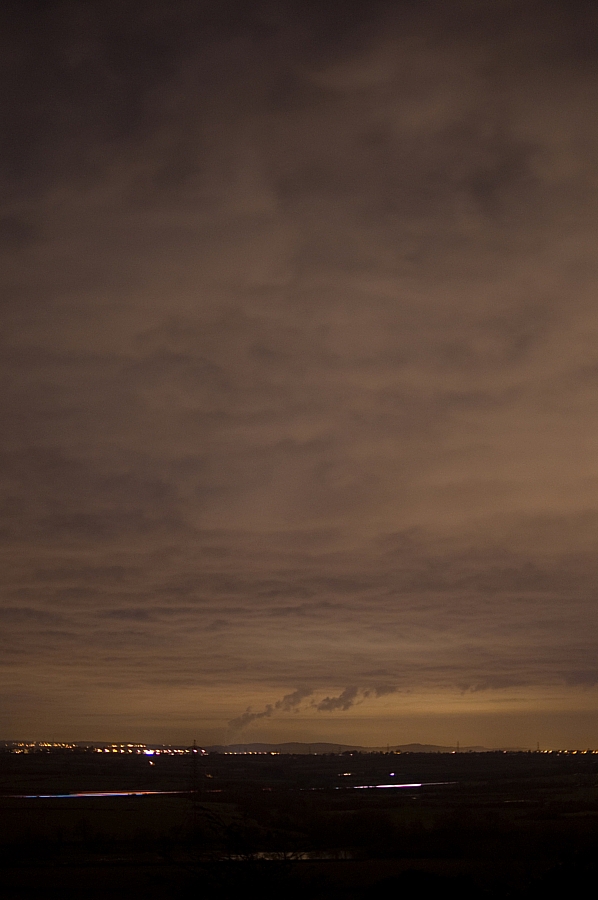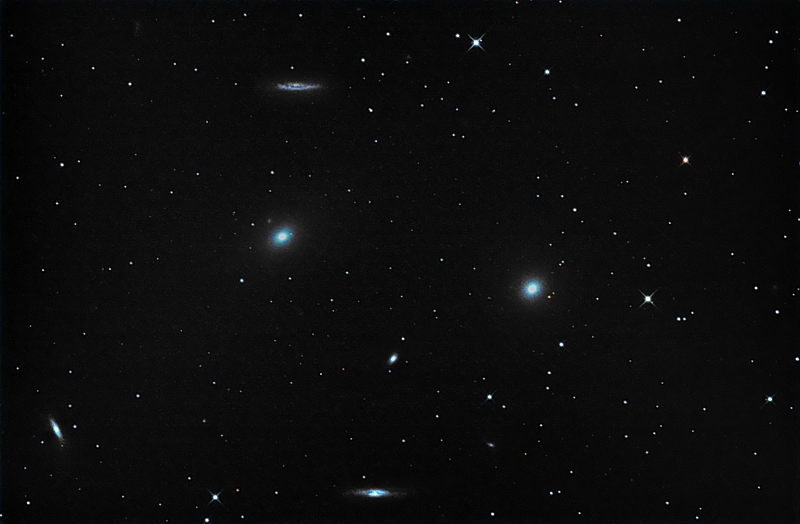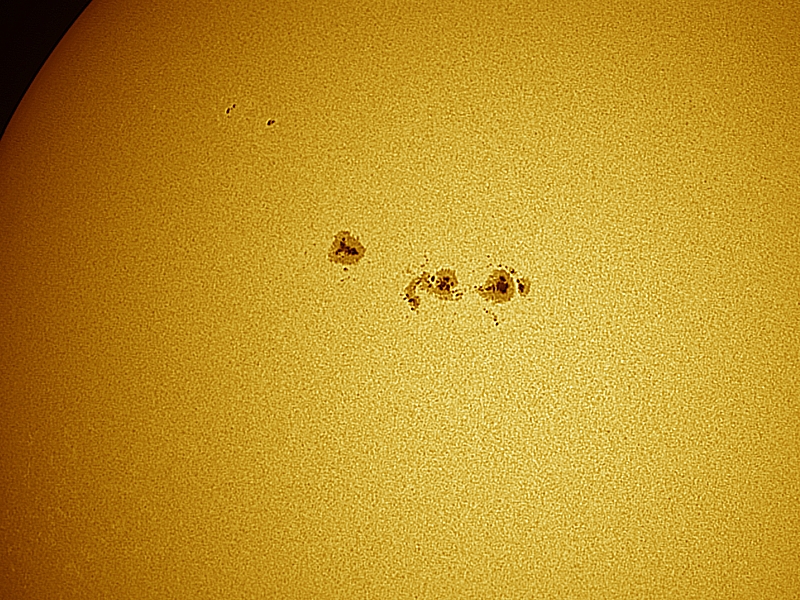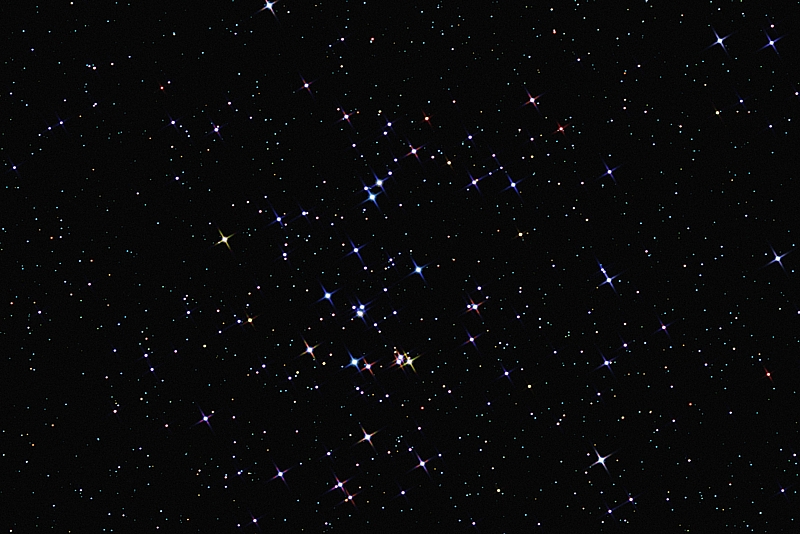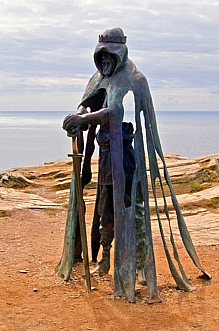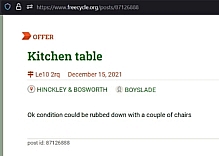The best period for seeing the Geminids was from dusk on Thursday to dawn on Friday. I was ready early with the D50 set up on the mount, toting the 35mm prime, and intending to track a bit of sky around Taurus. The evening started cloudy but I was convinced that there would be some clear spells before sun-up. Suffice to say that there wasn't a single cloud-gap all night and I gave in to sleep at around 4 a.m. when the mist came down and then froze. It had been a wasted night, and the fact that folk in other places had been seeing the best Geminid display for many a year was really rubbing it in.
The forecast for the next night was slightly better, the cloud was supposed clear sometime around midnight, so I decided to have another go even though the meteor-rate would be much lower. Same kit, this time tracking a vague area between Lynx and Ursa Major. The clouds did part and there was still a fair number of Geminids whizzing about, I took 300 pics and managed to catch just the one meteor trail. It was a promising start.
I re-aimed the camera and rattled off another 35 shots in the direction of Camelopardalis before the constellation became obstructed by the observatory roof. By this time Leo had risen so far that it was fully in the field of view so I aimed at that and ran off another 300 shots before it clouded over fully, ending the session.
After a short sleep and a wonderful afternoon of festive shopping I got around to processing the images, here's the best of the Geminids that I caught on camera:

Geminid meteor in Ursa Major
Main image: 19 x 30s subs @ ISO 400, stacked with DSS
Luminance layer: 1 x 30s sub processed in PS CS3
Final layering in PS CS3
Here's a screenshot from Starry Night Pro Plus 6, showing roughly where the FOV was:

The FOV of the 35mm prime on the D50
The red triangle marks the radiant point of the Geminid meteor shower
Compare the two images and you'll see that those naughty twins appear to have shot the Great Bear up the arse



